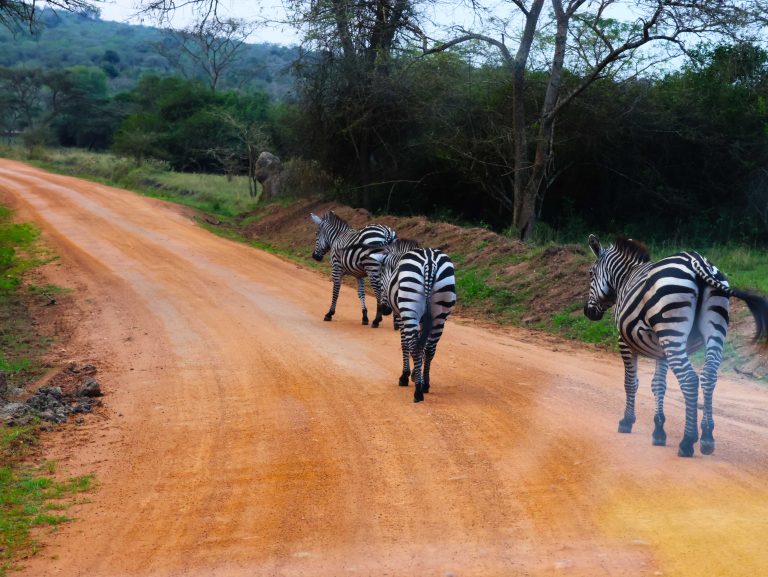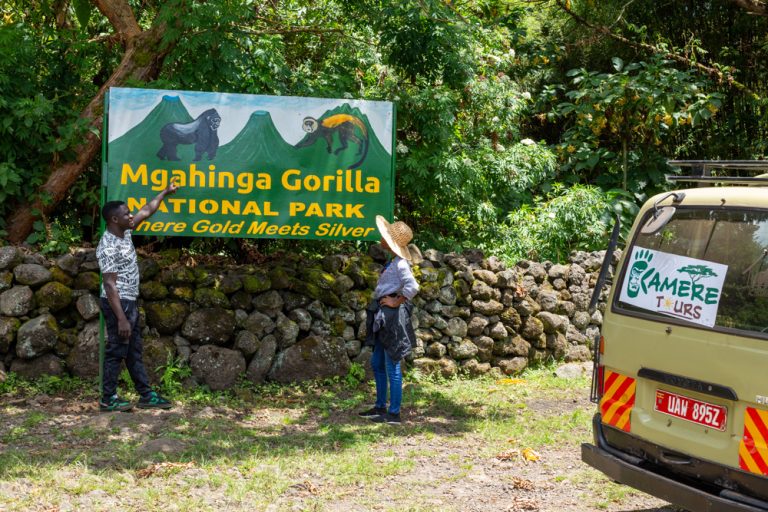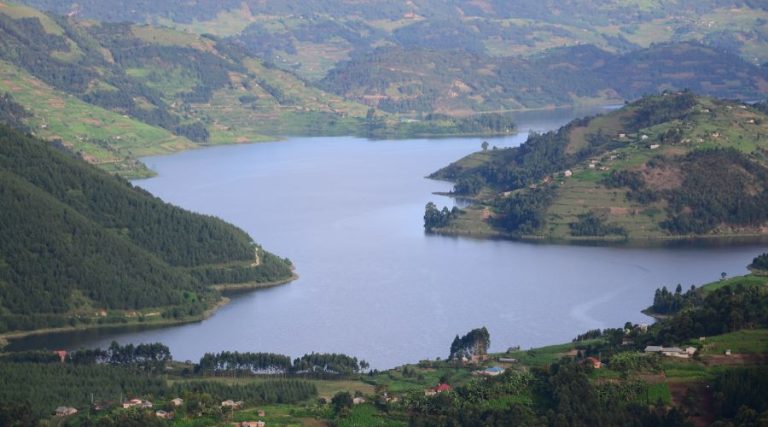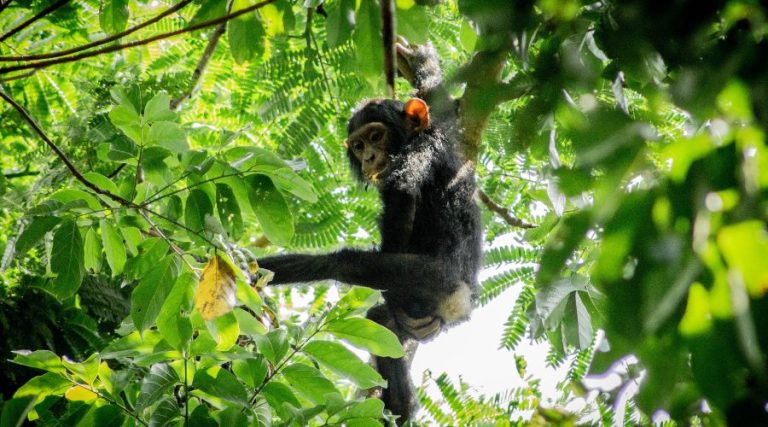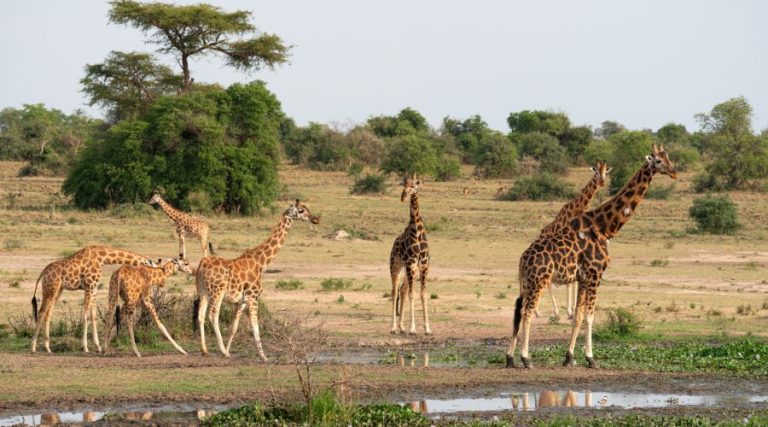Queen Elizabeth National Park
Discover Bwindi Impenetrable National Park with Kamere Tours and Travel
Related Destinations
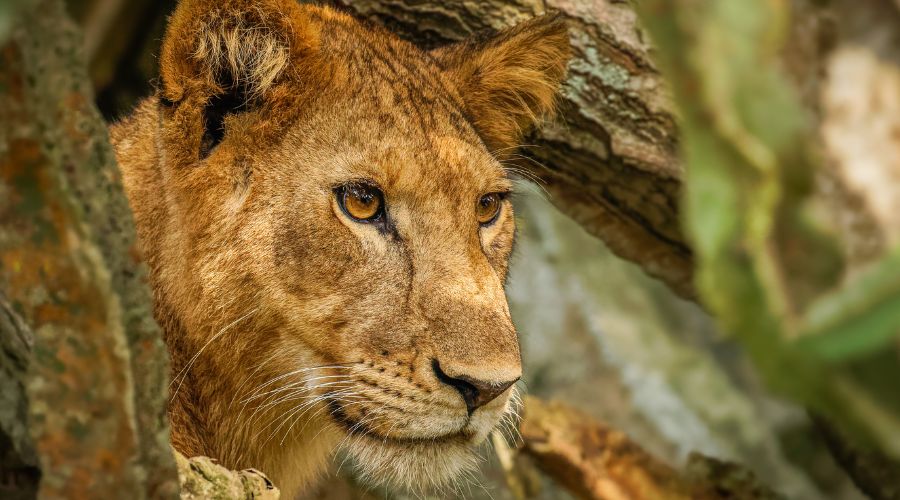
Queen Elizabeth National Park stands as Uganda’s most popular and visited wildlife conservation area. Located in the western part of Uganda, the park spans across the districts of Kamwenge, Rukingiri, Rubirizi, and Kasese. The park covers approximately 764 square miles, making it one of the largest protected areas in the country. It shares borders with Uganda’s Kibale National Park and extends into Congo’s Virunga National Park, creating a vast transboundary conservation area. Key geographical features within the park include the Kyambura Gorge, Maramagambo Forest, Kazinga Channel, and portions of Lake George and Lake Edward.
Establishment and History
Initially established in 1952 as Kazinga National Park, its name was changed to Queen Elizabeth National Park in honor of a visit by British Queen Elizabeth II in the early 1950s. Her visit left a lasting impression on the Ugandan government, leading to the park’s renaming. Unlike other famous African parks like the Maasai Mara or Serengeti, Queen Elizabeth National Park does not experience prolonged droughts due to its location within the rain shadow of the Rwenzori mountain ranges. This geographical advantage ensures the park remains green throughout most of the year, enhancing its natural beauty.
Wildlife in Queen Elizabeth national park
The park is home to a rich diversity of wildlife. Visitors can marvel at 95 recorded mammal species, including waterbucks, warthogs, topis, Uganda kobs, spotted hyenas, sitatungas, serval cats, mongooses, leopards, large forest pigs, L’Hoest’s monkeys, jackals, hippos, genets, elephants, crocodiles, civets, chimpanzees, buffaloes, and black-and-white colobus monkeys. As a designated lion conservation unit, Queen Elizabeth National Park boasts over 200 lions, including the unique tree-climbing lions found in the Ishasha sector. Additionally, the park is a bird-watching paradise with over 490 bird species recorded, attracting ornithologists from around the world.
Local Communities
The park’s periphery is inhabited by several local tribes, including the Banyankore, Bakiga, and Bakonjyo. The Bakiga and Bakonjo primarily engage in subsistence agriculture, while the Banyankore are known for their pastoralist lifestyle. Salt mining is also a significant economic activity, particularly among the Bakiga living near the park. The Uganda Wildlife Authority (UWA) manages the park in collaboration with various wildlife conservation organizations and teams of international and local researchers. Due to its proximity to Bwindi Impenetrable Forest, Kibale Forest National Park, and Mgahinga National Park, visitors can easily combine a wildlife safari in Queen Elizabeth National Park with gorilla trekking in Bwindi Forest.
Accessing Queen Elizabeth National Park
Travelers can reach Queen Elizabeth National Park by air or road. The distance from Kampala to the park via Mbarara is about 420 kilometers, typically taking around 8 hours by car. From Lake Mburo National Park, the drive is about six hours, and from Fort Portal town, it is approximately four hours. While the main roads are paved, those leading to and within the park are made of hard soil. Public or private vehicles can be used to reach the park’s gate, though public commercial vehicles are not allowed inside the park. Public buses depart from Kampala to Kasese early in the morning throughout the week, costing around $4. These buses often take time to fill up and may arrive late, depending on passenger volume and traffic conditions. The buses also make frequent stops in small towns along the route.
Once in Kasese, travelers need to hire a taxi or motorcycle to reach the park gates at Katunguru or Mweya. The most reliable and convenient way to travel to Queen Elizabeth National Park is through the services of a tour operator, such as Kamere Tours. Tour operators ensure a safe, comfortable, and well-organized journey, keeping to schedule and enhancing the overall safari experience. They also provide knowledgeable guides who are familiar with the park’s layout and the best spots for wildlife viewing. For those wishing to avoid the long drive from Entebbe, chartered flights are available from Kajjansi Airstrip or Entebbe International Airport to airstrips in Ishasha, Kasese, or Mweya. Upon landing, travelers can hire a private car to reach their accommodation or the park’s offices. Tour operators often arrange for a driver/guide to meet clients at the airstrip and facilitate their transfer.
Attractions and Activities
Game Drives:
One of the primary activities in Queen Elizabeth National Park is the game drive, offering visitors the chance to see a variety of mammals, including those found in the Serengeti but amidst more diverse and stunning landscapes. Game drives typically last 3-4 hours and begin early in the morning, heading to the Kasenyi plains, Ishasha sector, or Katwe crater fields. Each sector offers unique landscapes and wildlife viewing opportunities. The Kasenyi plains are particularly scenic, serving as a breeding ground for Uganda kobs and attracting numerous predators like lions and hyenas. Guides and park rangers lead the drives, ensuring visitors experience the best spots for wildlife viewing. Night game drives are also available for those interested in observing nocturnal predators in action.
Bird Watching:
Queen Elizabeth National Park is a premier birding destination in Uganda. Birdwatchers can explore various habitats, including forests like Budongo, the Kazinga Channel, plains, craters, and gorges like Kyambura. During migratory seasons, millions of birds flock to the park, creating a birdwatcher’s paradise. Notable species include the shoebill stork, martial eagle, and greater flamingo, among many others.
Boat Cruises:
The Kazinga Channel, connecting Lake George and Lake Edward, is a hotspot for wildlife viewing. A boat cruise along the channel provides close-up views of hippos, crocodiles, elephants, and a plethora of bird species. Tickets for the boat cruise are available at the Visitor Information Centre in Mweya. Visitors can choose between public boats and private boats operated by Mweya Safari Lodge.
Tree Climbing Lions:
The Ishasha sector is famous for its tree-climbing lions, a rare behavior not commonly seen in other lion populations. Game drives to Ishasha allow visitors to spot these lions resting in fig trees, along with other wildlife like elephants and buffaloes.
Chimpanzee Trekking:
The Kyambura Gorge, a stunning valley created by the Kyambura River, is home to a habituated population of chimpanzees. Trekking through the gorge offers the chance to observe these intelligent primates in their natural habitat, as well as other wildlife and unique plant species. Trekking permits are limited and should be booked in advance.
Nature Walks:
Maramagambo Forest offers guided nature walks, allowing visitors to explore its rich biodiversity. The forest is home to nine primate species, numerous birds, and other wildlife. Trails lead to bat caves, small crater lakes, and other points of interest.
Salt Mining at Lake Katwe:
A visit to the Lake Katwe salt mines provides insight into traditional salt mining techniques that have been used for centuries. The high salinity of the lake makes it unsuitable for wildlife, but the salt mining activity is a fascinating cultural experience.
Cultural Tours:
Cultural experiences enhance any visit to Uganda. Visitors can arrange to visit the Kikorongo Equator Cultural Group to participate in traditional dances, fire-making, and crafting activities. These tours offer a deeper understanding of local cultures and traditions, with opportunities to purchase handmade crafts.
Wildlife Conservation and Research Tours:
The Uganda Wildlife Authority offers research tours that provide close encounters with wildlife and insights into conservation efforts. Activities include lion tracking with radio collars and mongoose tracking. These tours offer a unique perspective on wildlife management and research efforts in the park.
Hot Air Balloon Rides:
Hot air balloon safaris provide breathtaking aerial views of the park, allowing visitors to see wildlife from a unique perspective. These rides are organized in the early morning, offering stunning sunrise views over the landscape.
Accommodation
Ishasha Wilderness Camp:
Located along the banks of the Ntungwe River in the Ishasha sector, this camp features stone and grass-thatched buildings. It offers ten self-contained tented rooms with amenities like Wi-Fi, verandas, and comfortable beds. The lodge’s lounge area provides excellent views of the river, where visitors can often see elephants and other wildlife.
Katara Lodge:
Near the Katara village and Katunguru gate, Katara Lodge offers bandas with grass roofs, a swimming pool, a bar, and a restaurant. The spacious rooms include modern amenities and private verandas with stunning views of the park, Lake Edward, and the surrounding mountains.
Kyambura Gorge Lodge:
Situated close to Kyambura Gorge, this lodge offers privacy and luxury, making it ideal for honeymooners. The eight bandas are self-contained with Wi-Fi, comfortable beds, and modern facilities. The lodge is perfect for primate lovers and those seeking tranquility.
Mweya Safari Lodge:
Located strategically with views of the Kazinga Channel, this luxury lodge offers both double and twin rooms with air conditioning. The lodge also features a bar, restaurant, and swimming pool. Mweya Safari Lodge organizes private boat cruises on the Kazinga Channel.
Queen Elizabeth Bush Lodge:
Managed by the Nature Lodges group, this lodge is centrally located near the Mweya and Kasenyi areas. It offers ten eco-friendly, self-contained rooms with local materials. Residents can often see wildlife like baboons from their verandas.
Jacana Safari Lodge:
Built on the banks of a crater lake near Maramagambo Forest, this lodge provides a serene atmosphere for relaxation. While camping is not available, visitors can enjoy the lodge’s rustic charm and nearby Research Station for a more adventurous experience.
Hippo Hill Camp:
Positioned on a hill at the park’s boundary with Katwe, this camp offers luxury tents with ensuite bathrooms and views of the nearby crater lakes and savannah plains.
Each lodge offers a unique experience, ensuring that every visitor to Queen Elizabeth National Park has a memorable and comfortable stay. The variety of accommodation options caters to different budgets and preferences, from luxurious lodges to eco-friendly bush camps.


